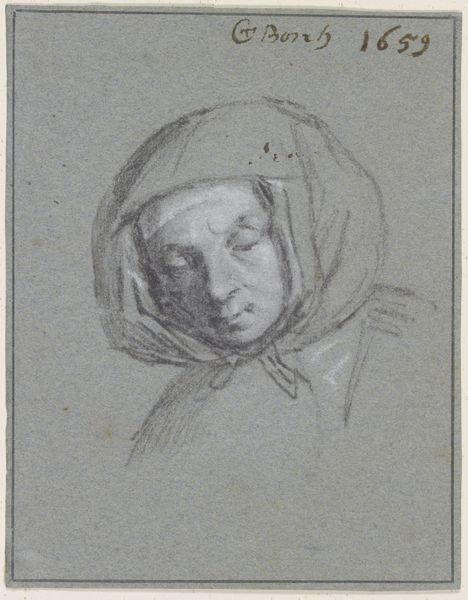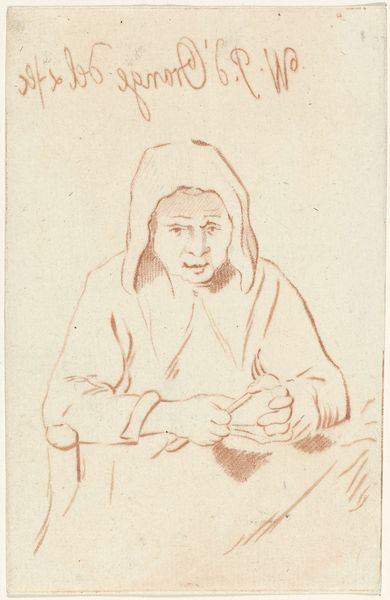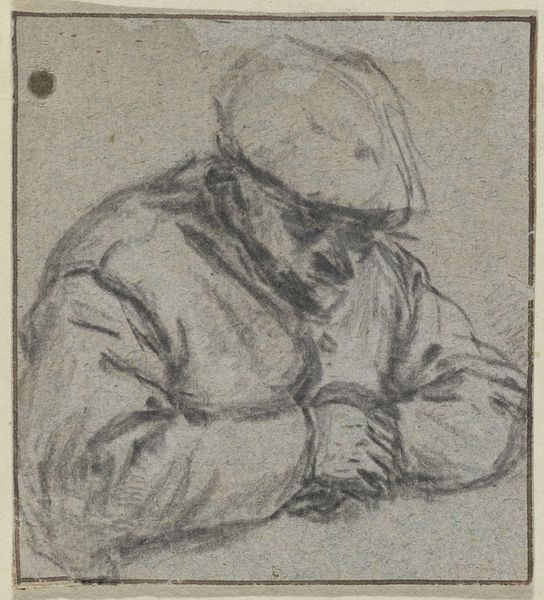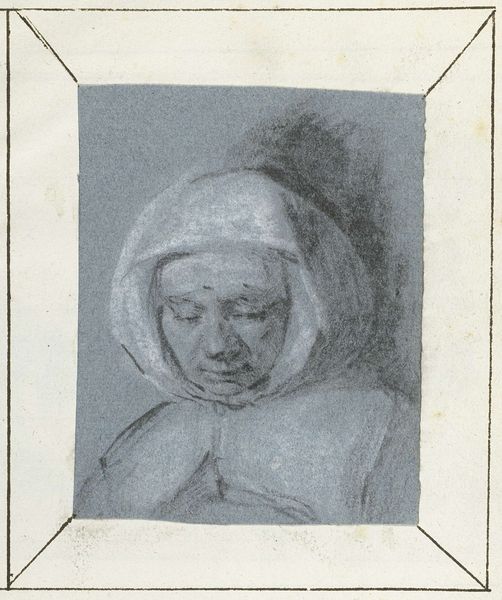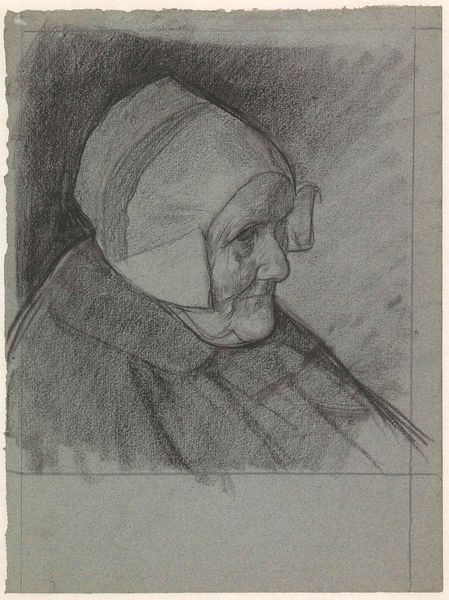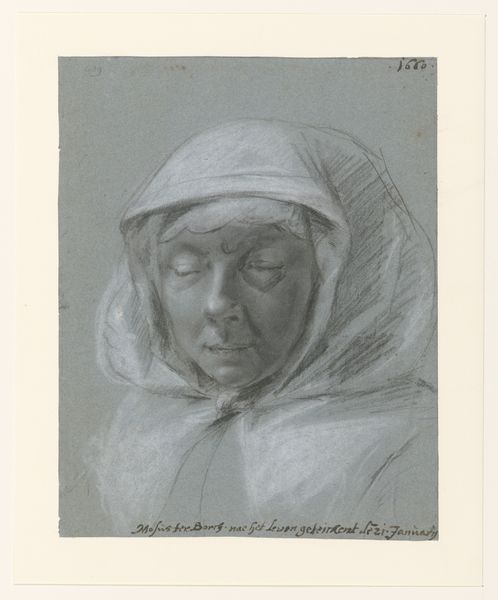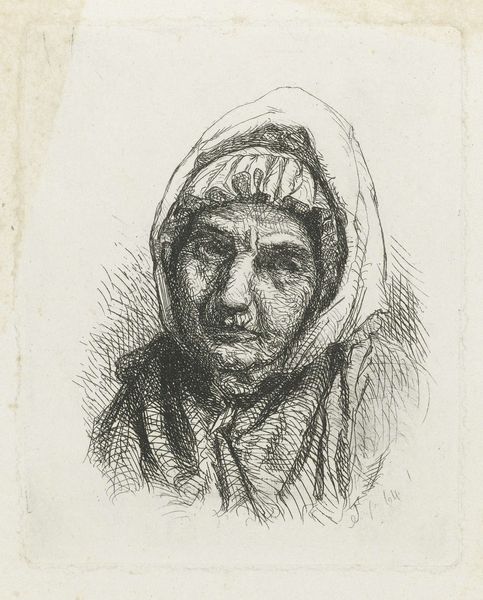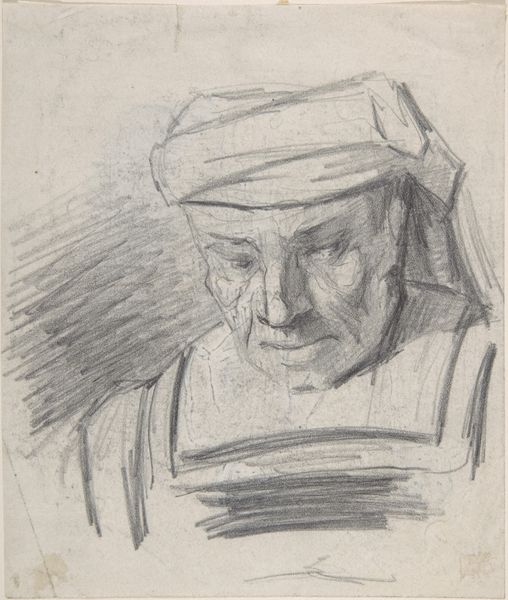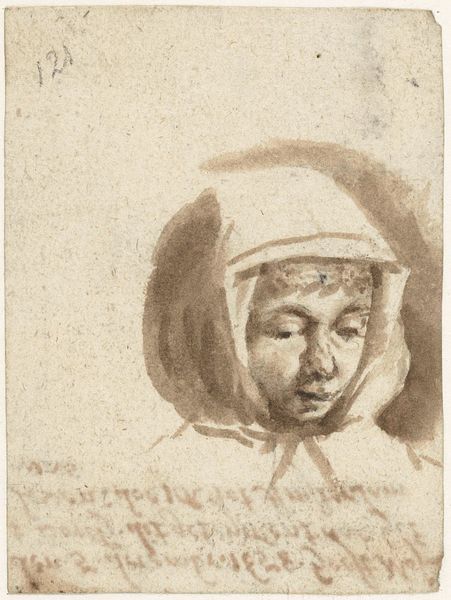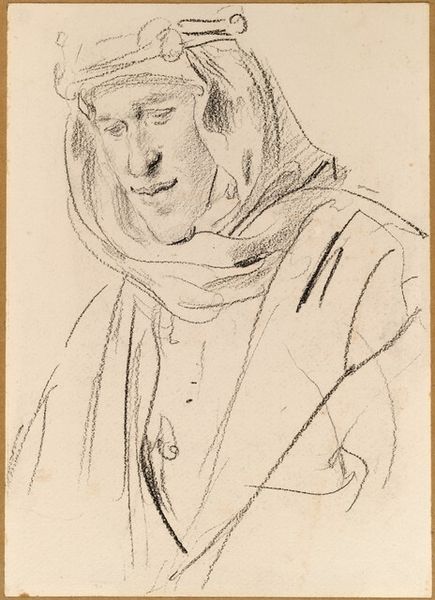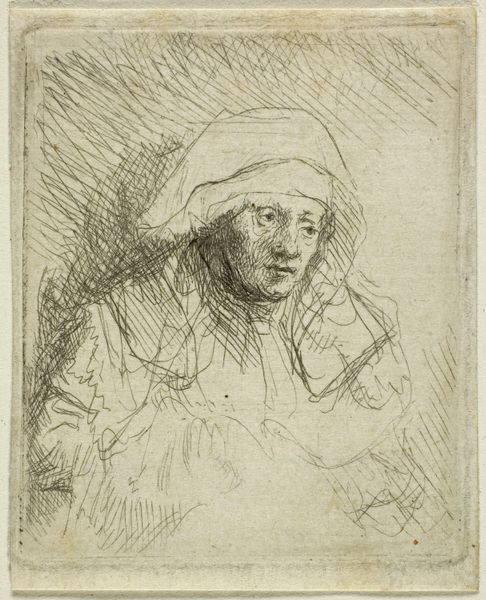
drawing, pencil
#
portrait
#
pencil drawn
#
drawing
#
dutch-golden-age
#
figuration
#
pencil drawing
#
pencil
#
portrait drawing
#
realism
Dimensions: height 95 mm, width 83 mm
Copyright: Rijks Museum: Open Domain
Curator: This drawing is entitled "Portret van een vrouw," or "Portrait of a Woman," created around 1660 by Moses ter Borch. It's currently held at the Rijksmuseum. What strikes you first about this piece? Editor: Oh, the tenderness. It’s quiet, contemplative, almost like a secret whispered in charcoal. I’m drawn to her downcast gaze and the way the light catches the fabric around her head. What about you? Curator: For me, it's the directness and the simplicity of the materials. It is a pencil drawing and paper—deceptively simple when we consider the period's artistic trends. This portrait steps away from lavish oil paintings, offering instead, a glimpse into the quotidian labor and life of portraiture as a commodity. Editor: Exactly! The medium underscores that sense of intimacy. You can almost feel the artist's hand moving across the page. I wonder about her story; what were the working conditions of the artist, his model? Her weariness seems etched into the lines, it gives me an urge to write poetry about the weight of untold stories. Curator: Ter Borch's mastery of the medium shines through the economy of lines, the suggestive modelling of form—a skill honed in his broader artistic output. He doesn't need flourish when his technical grounding speaks volumes, focusing instead on structure. This aligns with other trends we see amongst the Dutch Golden Age in a way; art moved away from excessive finery, refocusing art’s means and processes to depict a new emerging cultural perception that prioritised direct representation and observation, a turn to realism, if you will. Editor: Interesting perspective. For me, I feel a kind of universal empathy looking at her, she embodies all the burdens women have historically carried on their shoulders and yet this is somehow rendered softly, even lovingly. Her spirit feels somehow unconquerable even if she carries hardship. Curator: It is precisely that tension which makes the piece so compelling: hardship rendered elegantly on simple materials. It is a document of an aesthetic shift towards valuing material reality while capturing intangible sentiment, both elements contributing in shaping Dutch national identity in art history. Editor: Well, I can’t argue with that. Thank you, for once again providing us a means to gaze through the artist's eyes and glimpse history through art. Curator: My pleasure, and may this drawing lead you to further contemplations on labor and artistic craft of the Dutch Golden Age!
Comments
No comments
Be the first to comment and join the conversation on the ultimate creative platform.
